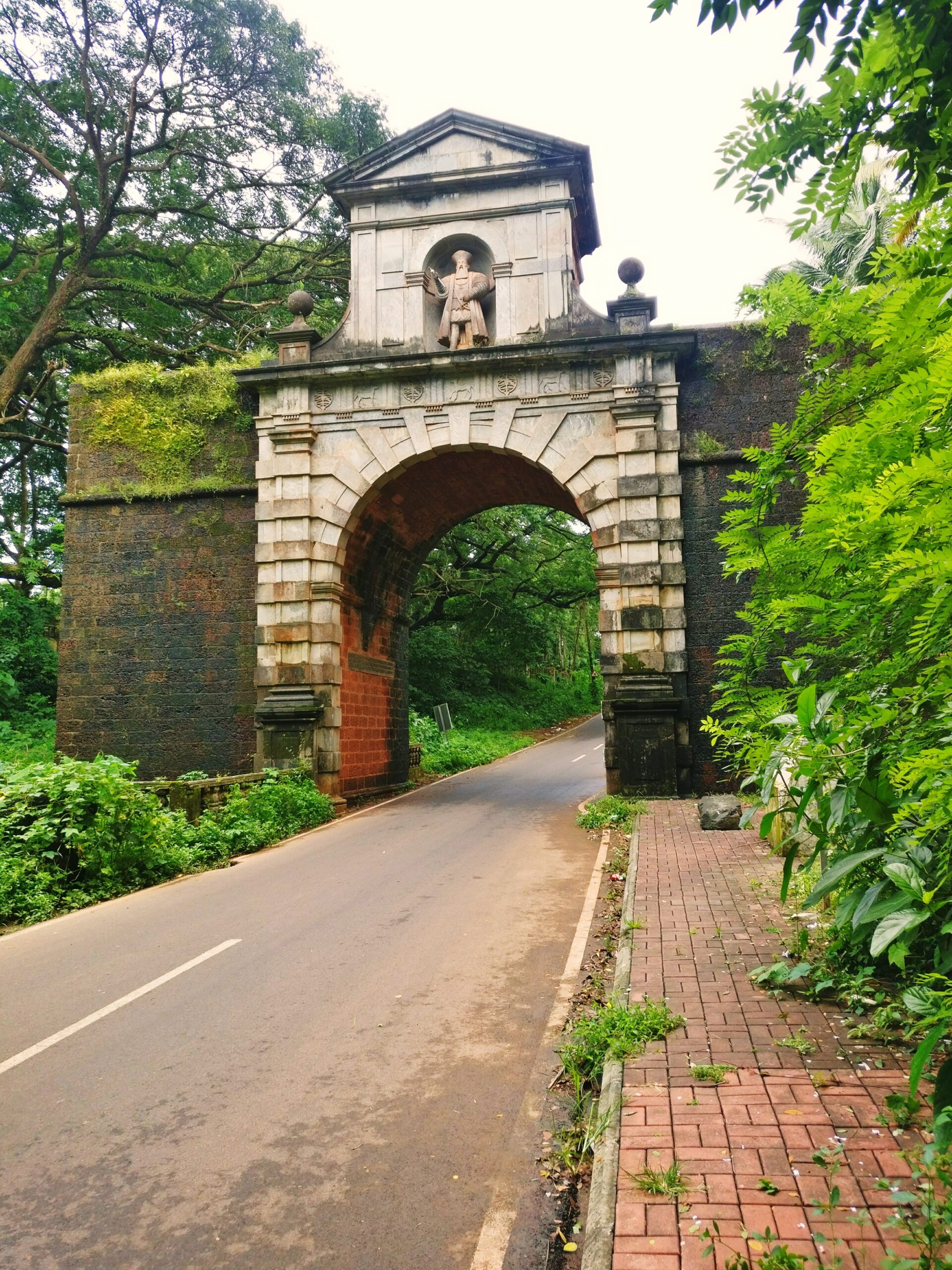Situated around 20 kilometres from the Capital City of Panjim, lies Velha Goa or Old Goa, the erstwhile Portuguese Capital of Goa and home to the Viceroy’s Arch.
Standing tall along the Mandovi River, beyond the Se Cathedral, the Viceroy’s Arch is a testimony to the rich and colourful history of a bygone era. Francis Da Gama, the then Viceroy of Goa and great-grandson of the famous Portuguese explorer Vasco Da Gama constructed the Viceroy’s Arch in 1599. It was a tribute to his great-grandfather, Vasco Da Gama, the man who discovered the sea-route to India and Goa.


Unused for many years after Goa was liberated, the arch suffered disrepair. Restored in 1954, the Viceroy’s Arch is a tourist attraction. Built with laterite stone, the seaward side is faceted with green granite. The archway boasts of intricate floral designs with the statue of Vasco Da Gama on the river-facing side, in full ceremonial regalia.
On the in-land side exists a statue of a crowned woman wielding a sword standing over a man wearing a turban and richly decorated robes. This is thought to be a depiction of the successful Portuguese conquest of Goa and the success of the Inquisition. There was also a statue of St. Catherine which graced the archway, but it has since been moved to the nearby museum grounds. The Viceroy’s Arch is also inscribed with the deer crest of the family of Vasco da Gama.
There are also a number of Gothic inscriptions, the deciphering of which form an amusing pastime for tourists visiting the arch. One of these inscriptions is dedicated to the Immaculate Conception of the Virgin Mary and commemorates the emancipation of Portugal from Spain in 1656. There are also inscribed slabs detailing the importance of the Viceroy’s Arch.


